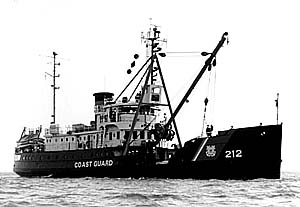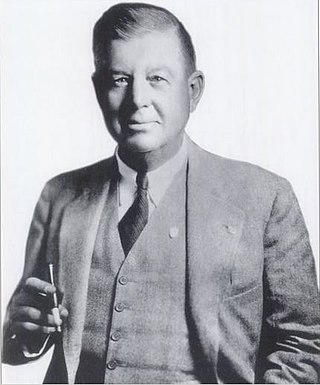
Sausalito is a city in Marin County, California, United States, located 1.5 miles southeast of Marin City, 8 miles (13 km) south-southeast of San Rafael, and about 4 miles (6 km) north of San Francisco from the Golden Gate Bridge.

Vigor Shipyards is the current entity operating the former Todd Shipyards after its acquisition in 2011. Todd Shipyards was founded in 1916, which owned and operated shipyards on the West Coast of the United States, East Coast of the United States and the Gulf. Todd Shipyards were a major part of the Emergency Shipbuilding Program for World War II.

Marin City is an unincorporated community and census-designated place (CDP) in Marin County, California, United States. As of the 2020 census, it had a population of 2,993, up from 2,666 in 2010. It is located 1.5 miles northwest of downtown Sausalito, 8 miles (13 km) south-southeast of San Rafael, and about 5 miles (8 km) north of San Francisco from the Golden Gate Bridge, at an elevation of 23 feet (7.0 m). Marin City was developed for housing starting in 1942, to accommodate wartime shipyard workers and other migrants to California. Among those were African Americans from the South in the Great Migration, which continued until 1970.

Marinship Corporation was a shipbuilding company of the United States during World War II, created to build the shipping required for the war effort. Founded in 1942, the shipyard built 93 cargo ships and oil tankers, before ending operations in 1945.

Moore Dry Dock Company was a ship repair and shipbuilding company in Oakland, California. In 1905, Robert S. Moore, his brother Joseph A. Moore, and John Thomas Scott purchased the National Iron Works located in the Hunter's Point section of San Francisco, and founded a new company, the Moore & Scott Iron Works Moore had previously been vice president of the Risdon Iron Works of San Francisco. Scott was nephew to Henry T. and Irving M. Scott, owners of the nearby Union Iron Works, where John had risen from apprentice to superintendent. Their new business was soon destroyed by fire resulting from the San Francisco earthquake.

The Alameda Works Shipyard, in Alameda, California, United States, was one of the largest and best equipped shipyards in the country. The only building remaining from the yard is the Union Iron Works Powerhouse, which is listed on the National Register of Historic Places.1956.

The four Richmond Shipyards, in the city of Richmond, California, United States, were run by Permanente Metals and part of the Kaiser Shipyards. In World War II, Richmond built more ships than any other shipyard, turning out as many as three ships in a single day. The shipyards are part of the Rosie the Riveter/World War II Home Front National Historical Park, whose Rosie the Riveter memorial honors the shipyard workers. Shipyard #3 is listed on the National Register of Historic Places and is a California Historical Landmark # 1032.
The Western Pipe and Steel Company (WPS) was an American manufacturing company that is best remembered today for its construction of ships for the Maritime Commission in World War II. It also built ships for the U.S. Shipping Board in World War I and took part in the construction of the giant Grand Coulee Dam project in the 1930s.

General Engineering & Dry Dock Company was a shipbuilding and ship repair company in Alameda, California that was active from the 1920s through the 1940s. The company built ships for the Southern Pacific Railroad and the United States Coast Guard in the late 1920s and early 1930s and took part in the World War II shipbuilding boom, making diesel-propelled steel hulled auxiliaries for the United States Navy, primarily oceangoing minesweepers.

The Type B ship is a United States Maritime Administration (MARAD) designation for World War II barges. Barges are very low cost to build, operate and move. Barges were needed to move large bulky cargo. A tug boat, some classed as Type V ships, could move a barge, then depart and move on to the next task. That meant the barge did not have to be rushed to be unloaded or loaded. Toward the end of World War 2, some ships that had not been completed in time for the war were converted to barges. US Navy barges are given the prefix: YWN or YW. Due to shortage of steel during World War II, concrete ship constructors were given contracts to build concrete barges, with ferrocement and given the prefix YO, YOG, YOGN. Built in 1944 and 1945, some were named after elements.

Pacific Bridge Company was a large engineering and construction company. During World War II, Pacific Bridge Company of Alameda, California was selected to build US Navy Auxiliary Repair Docks (ARD) a type of Auxiliary floating drydock and Type B ship barges.

Albina Engine & Machine Works was a shipyard along the Willamette River in Portland, Oregon, United States. It was located in the Albina area of Portland along N. River Street and N. Loring Street. Albina Engine & Machine Works was founded in 1904. The shipyard produced a number of freighters during World War I, but operated mainly as a repair yard during the 1920s and 1930s. The Albina yard expanded its workforce and production during Portland's World War II shipbuilding boom. It specialized in producing subchasers, vessels designed to combat German U-boats. Albina Engine & Machine Works also built Landing Craft Support boats and cargo ships. Business declined in the post-war years, and Albina Engine & Machine Works was sold to the Dillingham Corporation around 1971.

California during World War II was a major contributor to the World War II effort. California's long Pacific Ocean coastline provided the support needed for the Pacific War. California also supported the war in Europe. After the Japanese attack on Pearl Harbor on December 7, 1941, most of California's manufacturing was shifted to the war effort. California became a major ship builder and aircraft manufacturer. Existing military installations were enlarged and many new ones were built. California trained many of the troops before their oversea deployment. Over 800,000 Californians served in the United States Armed Forces. California agriculture, ranches and farms were used to feed the troops around the world. California's long coastline also put the state in fear, as an attack on California seemed likely. California was used for the temporary and permanent internment camps for Japanese Americans. The population grew significantly, largely due to servicemen who were stationed at the new military bases/training facilities and the mass influx of workers from around the U.S. in the growing defense industries. With all the new economy activity, California was lifted out of the Great Depression. Over 500,000 people moved to California from other states to work in the growing economy. California expanded its oil and mineral production to keep up with the war demand.
Clyde W. Wood was a shipbuilding company in Stockton, California. To support the World War 2 demand for ships Clyde W. Wood built: tugboats, and US Army barges. Clyde W. Wood started as a construction company paving asphalt and concrete slabs. In 1941 the company opened a small emergency shipyard. The yard first built barges and then tugs for the Army. After World War 2, the shipyard closed in 1945. The yard was located at 1805 Harbor Street, Stockton, the current location of the Penny Newman Grain Terminal. The shipyard was on the Stockton Channel on the deepwater port on the Stockton Ship Channel of the Pacific Ocean and an inland port located more than seventy nautical miles from the ocean, on the Stockton Channel and San Joaquin River-Stockton Deepwater Shipping Channel (before it joins the Sacramento River to empty into Suisun Bay.

The Pacific Coast Engineering Company or PACECO Corp. is an American industrial fabricator and mechanical engineering company headquartered in Haywood, California. It is a wholly-owned subsidiary of Mitsui E&S.
Madden, Lewis or Madden and Lewis Company or Madden and Lewis Corp. was a wooden shipbuilding company in Sausalito, California. To support the World War 2 demand for ships Madden, Lewis shipyard switched over to military construction and built: US Navy tugboats and Harbour Defence Motor Launch. The company was founded by James Herbert Madden Sr., who was also active in the Sausalito Yacht Club. James Herbert Madden Sr. and Gertrude Murphy Madden raised five children in Sausalito. Madden and Lewis Company also owned the Sausalito side of the Golden Gate Ferry Company that ran before the completion of the Golden Gate Bridge, the ferry was run by the Northwestern Pacific Railroad now the site of the Sausalito Ferry Terminal. After the war the yard returned to pleasure craft building and repair. On March 19, 1960 a large fire broke out at the boatyard. The boatyard was in Richardson Bay at 200 Johnson street, Sausalito, near the current Sausalito Yacht Harbor.

Hurley Marine Shipyard of Hurley Marine Works also site of Naval Reserve Armory, Oakland and the Naval Industrial Reserve Repair Facility, Oakland was a shipyard in Oakland, California. The Hurley Marine Shipyard opened in 1940 on property that previously had belonged to the General Engineering & Drydock Company, in 1951 the yard was operated by Crowley Maritime Corporation. In 1964 the site was operated by Pacific Dry Dock and Repair Company. The shipyard closed in 1992, today most of the shipyard is vacant land with part of the land now Leal Seal Boat Works owned by Leal Charonnat, of Leal Charonnat - Architect & Engineering. A small boatyard operated at the site from 1935 to 1940. The shipyard was located at 321 Embarcadero Oakland on the San Francisco bay, Inner Oakland Harbor. Crowley Maritime Corporation was the parent corporation of Pacific Dry Dock, which used the shipyard to repair its fleet of tugboats and other ships. Pacific Dry Dock also operated a shipyard across from Coast Guard Island till 1991 at 1414 Embarcadero Oakland.















